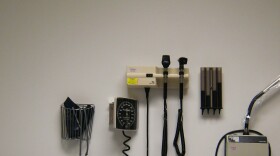A new report from the Robert Wood Johnson Foundation and the Urban Institute finds 87 percent of Medicaid-eligible children in Indiana have health insurance.
That might sound like a substantial figure, but 32 states have participation rates for that same group above 90 percent. Indiana ranks 44th for its childrens’ Medicaid coverage.
About 4 out of 10 kids in Indiana receive Medicaid coverage...that’s approximately 650,000 people.
And experts say there some are still slipping through the cracks. Almost 9 percent of Medicaid-eligible children remain uninsured.
The report finds the number of insured low-income children increased from 2013 to 2014 across the vast majority of states, but the gains were more distinct in states that expanded Medicaid.
The Urban Institute’s Genevieve Kenney says even in states such as Indiana, which implemented its HIP 2.0 plan in 2015, expansion in other states probably had a trickle-down effect.
“The awareness of the public coverage options for kids likely rose with all the activity in 2014,” Kenney says. Additionally, says Kenney, the A.C.A. did, after all, enact a mandate on coverage, which most likely had an effect on enrollment as well.
Indiana Medicaid Director Joe Moser says the connection between the increased children’s coverage and Medicaid expansion is likely minimal, since the nationwide expansion focused on adults, not children, who were already receiving more comprehensive coverage than adults when the federal government rolled out the Affordable Care Act.
“Only insofar as the parents enrolled the kids as they were enrolling themselves would there be any connection whatsoever,” he says.
Kenney says to reach more uninsured kids, states need to focus on keeping those already in the Medicaid program enrolled.
“States have had real progress covered eligible but uninsured children by focusing on retention,” she says, saying the responsibility falls to public agencies to make the enrollment (and re-enrollment) processes as easy and least-burdensome as possible.
Indiana’s Medicaid expansion didn’t occur until 2015 when the state received a waiver to merge it with existing HIP 2.0 provisions. Kenney says next year’s data will reflect the potential effect of HIP 2.0 on children’s Medicaid enrollment.





